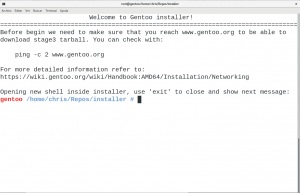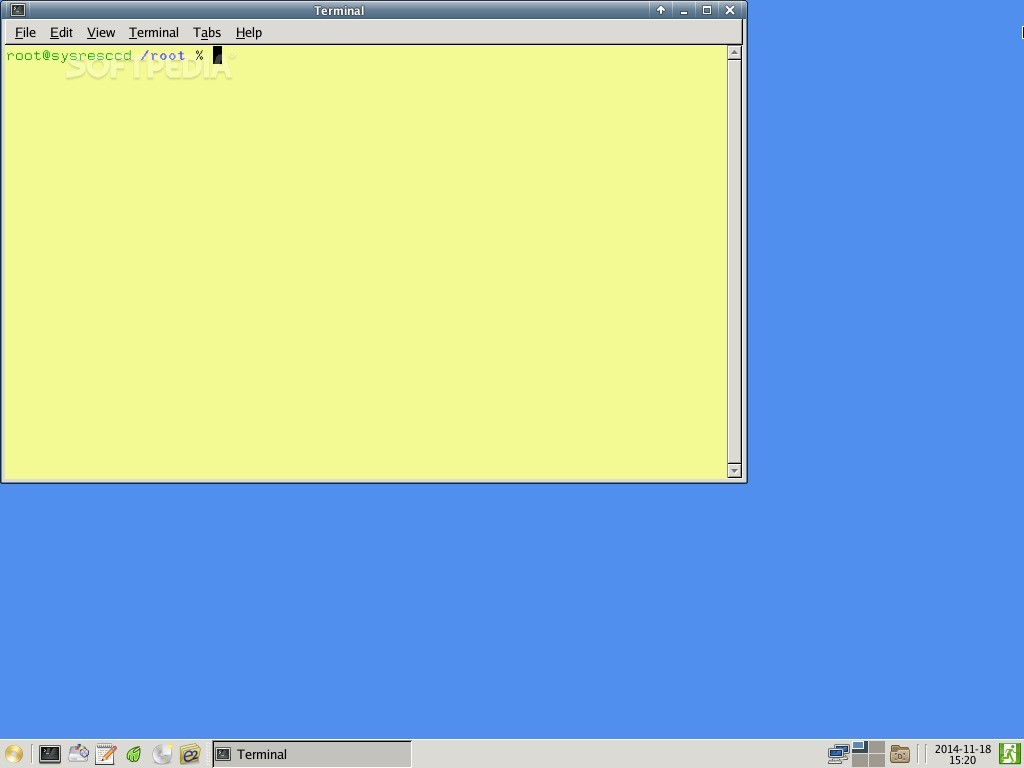

- GENTOO RECOVERY IMAGE SYSTEMRESCUECD INSTALL
- GENTOO RECOVERY IMAGE SYSTEMRESCUECD SOFTWARE
- GENTOO RECOVERY IMAGE SYSTEMRESCUECD ISO
captured the wrong directory) or cannot be restored. Too often users forget this and are severely disappointed when they find out that their daily backups didn't do much (e.g. Either restore to another location or system, or restore immediately after taking a backup.
GENTOO RECOVERY IMAGE SYSTEMRESCUECD SOFTWARE
For such situations, on-system software is responsible for regularly taking copies (or patches/diffs) from a predefined list of files and directories. Most of these recovery solutions are based on partition imaging (like with dd, CloneZilla, PartImage, or FSArchiver), although in Gentoo, stage4 snapshots can also be used as some sort of bare-metal recovery solution (captures files, but not disk partition data).įor a more selective approach, a file- and directory-based backup/recovery model is used. The result of a bare-metal restore is a fully bootable system again. In the directory customrescuecd64/boot/grub/x86_64-efi/ copy the files all_video.mod efi_gop.mod efi_uga.mod gfxterm.mod videoinfo.mod videotest.mod from /usr/lib/grub/x86_64-efi/ of your stage4ĭownload the font.pf2 in the directory customrescuecd64/boot/grub/Ĭreate the file /mnt/customrescuecd64/boot/grub/grub.In case of bare-metal recovery, software is used without installing it on the operating system that is under backup/recovery. Root # mksquashfs /mnt/customresccd-squash/ /mnt/customrescuecd64/customresccd/x86_64/customrescuecd.sfs -wildcards -ef exclude.txt -b 1024K -comp xz -progress -processors 4 -Xdict-size 100% Bootloader Syslinuxĭownload the syslinux cfg from and explode into customrescuecd64/boot/syslinux/ the content of this directory must be the one that follow! All *.c32 and memdisk isolinux.bin boot.cat pxelinux.0 isohdpfx.bin file you can copy from your stage4 at folder /usr/share/syslinux/ mnt/customrescuecd64 is for the files that will become the ISO9660 filesystem, including the squashfs above.

This will be turned into a squashfs later. mnt/customrescuecd-squash is for the stage4.
GENTOO RECOVERY IMAGE SYSTEMRESCUECD ISO
I advise you to keep two terminals open, one for the stage 4 chroot and another you will need to create the squash and the iso ahead. EFI/customiso/grub.img <- Grub Partition in append to iso for efi boot that contain. EFI/boot/boot圆4.efi < - Grub Efi Executable for usb stick boot customresccd/x86_64/customrescuecd.sha512 <- Sha512 of Squashfs customresccd/x86_64/customrescuecd.sfs <- SquashFS boot/x86_64/customrescue64 <- CustomRescueCd KERNEL boot/syslinux/boot.cat <- Syslinux Boot Catalogue boot/syslinux/isolinux.bin <- Syslinux Image boot/syslinux/isohdpfx.bin <- Syslinux MBR for Bios Boot boot/syslinux/syslinux.cfg <- Main Syslinux Configuration File boot/memtest86plus/memtest.bin <- Memtest kernel for bios boot boot/grub/grub.cfg <- Grub Configuration File for EFI BOOT This will then be packaged with a syslinux /boot to make the bootable ISO9660 image.īurning the image to a CD or making a bootable USB stick will not be addressed. This will become customrescuecd-squash, which will be the root filesystem in the CD.
GENTOO RECOVERY IMAGE SYSTEMRESCUECD INSTALL
The steps are to make a Gentoo Install inside a directory. This document will walk readers through the steps to create a Gentoo stage4 inside a squashfs and subsequently use it in a bootable ISO9660 image.


 0 kommentar(er)
0 kommentar(er)
